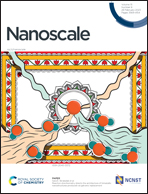Super-adsorbent microspheres based on a triallyl isocyanurate–maleic anhydride copolymer for the removal of organic pollutants from water†
Abstract
Owing to the frequent occurrence of diclofenac sodium (DS) in fresh aquatic environments and its potential toxicity towards living organisms, the effective removal of DS has attracted worldwide attention. Herein, a green and efficient strategy to fabricate crosslinked microspheres with interconnected mesoporous structures and abundant adsorption active sites was developed. With this strategy, triallyl isocyanurate (TAIC)–maleic anhydride (MAH) copolymer microspheres (TMs) with a diameter of 1.19–1.35 μm were first prepared by self-stabilized precipitation (2SP) polymerization, and the TMs possess a large amount reactive anhydride groups (62.5–71.8 mol%), a specific surface area of 51.6–182.4 m2 g−1 and a mesoporous structure (average pore size: 3.4–3.8 nm). Then the TMs were further functionalized with polyethylenimine (PEI) to give rise to cationic microspheres (Cat-TMs), which showed excellent adsorption performance to DS with a rapid adsorption rate (reached equilibrium within 30 min), a very high equilibrium adsorption capacity (1421 mg g−1) and excellent recyclability. The pseudo-second-order model and Langmuir model were a good fit for the adsorption kinetic and isotherm process, respectively. Furthermore, due to the high cation density (4.291 mmol g−1) and excellent pH buffer capacity of Cat-TMs, the adsorption capacity can be maintained at a high level within the pH range of 6–10. The regenerated Cat-TMs showed only a slight loss (<5%) in the adsorption capacity even after 5 adsorption–desorption cycles. In short, Cat-TMs can be considered as a highly promising adsorbent for the rapid and ultra-efficient removal of anionic organic contaminants and have significant potential to be applied in wastewater treatment.



 Please wait while we load your content...
Please wait while we load your content...